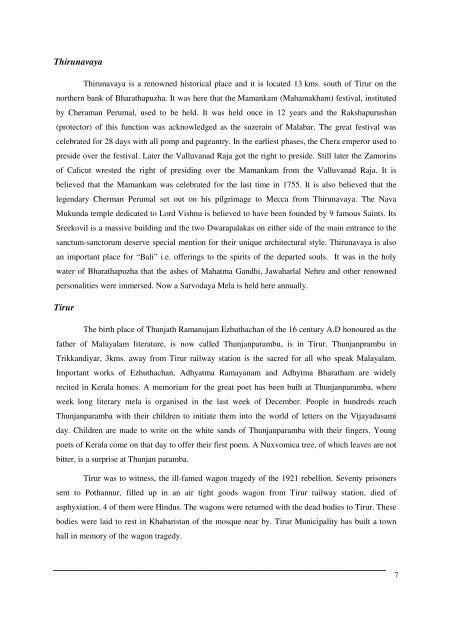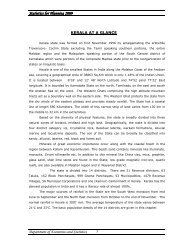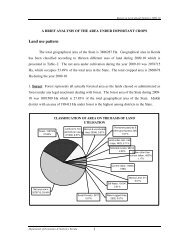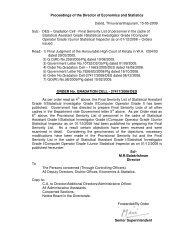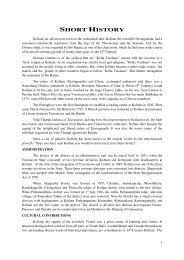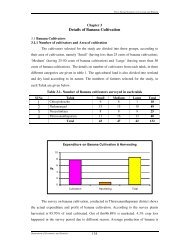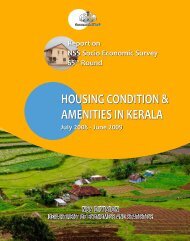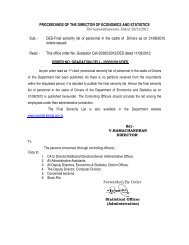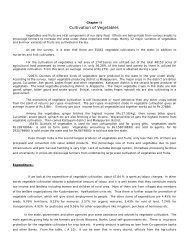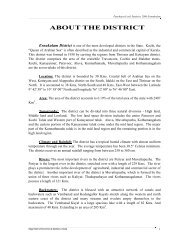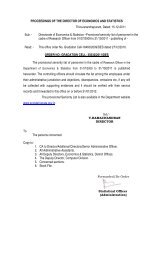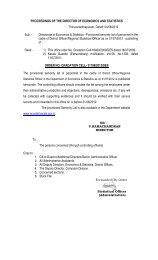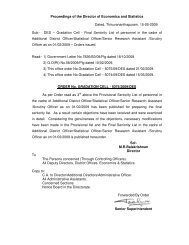BRIEF HISTORY - Government of Kerala
BRIEF HISTORY - Government of Kerala
BRIEF HISTORY - Government of Kerala
Create successful ePaper yourself
Turn your PDF publications into a flip-book with our unique Google optimized e-Paper software.
Thirunavaya<br />
Thirunavaya is a renowned historical place and it is located 13 kms. south <strong>of</strong> Tirur on the<br />
northern bank <strong>of</strong> Bharathapuzha. It was here that the Mamankam (Mahamakham) festival, instituted<br />
by Cheraman Perumal, used to be held. It was held once in 12 years and the Rakshapurushan<br />
(protector) <strong>of</strong> this function was acknowledged as the suzerain <strong>of</strong> Malabar. The great festival was<br />
celebrated for 28 days with all pomp and pageantry. In the earliest phases, the Chera emperor used to<br />
preside over the festival. Later the Valluvanad Raja got the right to preside. Still later the Zamorins<br />
<strong>of</strong> Calicut wrested the right <strong>of</strong> presiding over the Mamankam from the Valluvanad Raja. It is<br />
believed that the Mamankam was celebrated for the last time in 1755. It is also believed that the<br />
legendary Cherman Perumal set out on his pilgrimage to Mecca from Thirunavaya. The Nava<br />
Mukunda temple dedicated to Lord Vishnu is believed to have been founded by 9 famous Saints. Its<br />
Sreekovil is a massive building and the two Dwarapalakas on either side <strong>of</strong> the main entrance to the<br />
sanctum-sanctorum deserve special mention for their unique architectural style. Thirunavaya is also<br />
an important place for “Bali” i.e. <strong>of</strong>ferings to the spirits <strong>of</strong> the departed souls. It was in the holy<br />
water <strong>of</strong> Bharathapuzha that the ashes <strong>of</strong> Mahatma Gandhi, Jawaharlal Nehru and other renowned<br />
personalities were immersed. Now a Sarvodaya Mela is held here annually.<br />
Tirur<br />
The birth place <strong>of</strong> Thunjath Ramanujam Ezhuthachan <strong>of</strong> the 16 century A.D honoured as the<br />
father <strong>of</strong> Malayalam literature, is now called Thunjanparambu, is in Tirur. Thunjanprambu in<br />
Trikkandiyar, 3kms. away from Tirur railway station is the sacred for all who speak Malayalam.<br />
Important works <strong>of</strong> Ezhuthachan, Adhyatma Ramayanam and Adhytma Bharatham are widely<br />
recited in <strong>Kerala</strong> homes. A memoriam for the great poet has been built at Thunjanparamba, where<br />
week long literary mela is organised in the last week <strong>of</strong> December. People in hundreds reach<br />
Thunjanparamba with their children to initiate them into the world <strong>of</strong> letters on the Vijayadasami<br />
day. Children are made to write on the white sands <strong>of</strong> Thunjanparamba with their fingers. Young<br />
poets <strong>of</strong> <strong>Kerala</strong> come on that day to <strong>of</strong>fer their first poem. A Nuxvomica tree, <strong>of</strong> which leaves are not<br />
bitter, is a surprise at Thunjan paramba.<br />
Tirur was to witness, the ill-famed wagon tragedy <strong>of</strong> the 1921 rebellion. Seventy prisoners<br />
sent to Pothannur, filled up in an air tight goods wagon from Tirur railway station, died <strong>of</strong><br />
asphyxiation. 4 <strong>of</strong> them were Hindus. The wagons were returned with the dead bodies to Tirur. These<br />
bodies were laid to rest in Khabaristan <strong>of</strong> the mosque near by. Tirur Municipality has built a town<br />
hall in memory <strong>of</strong> the wagon tragedy.<br />
7


